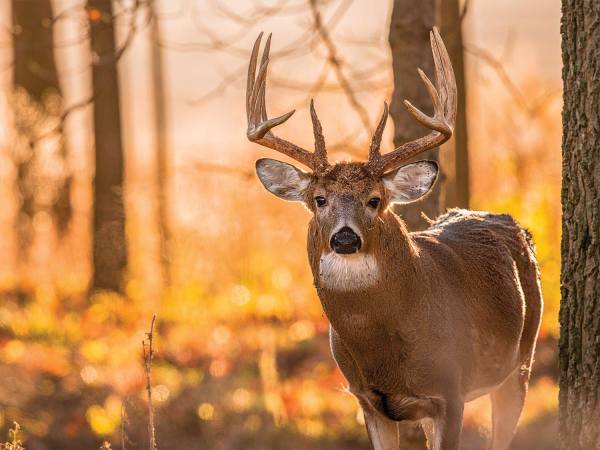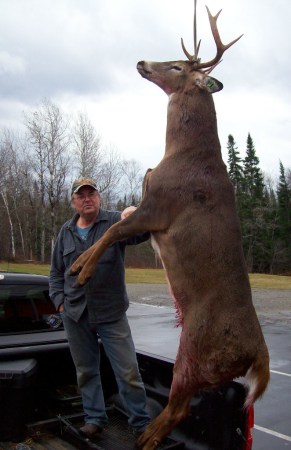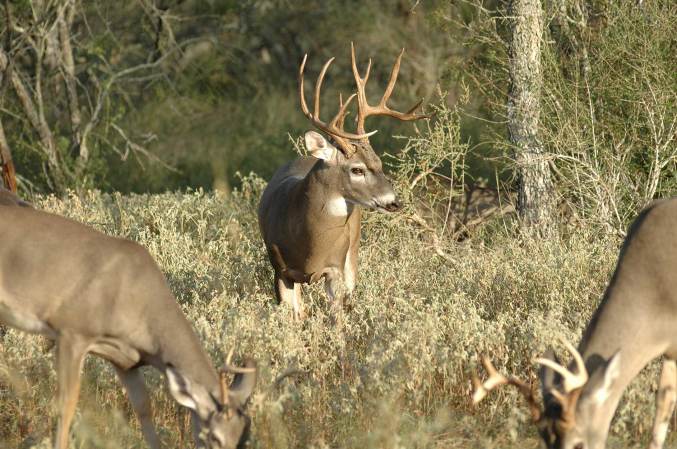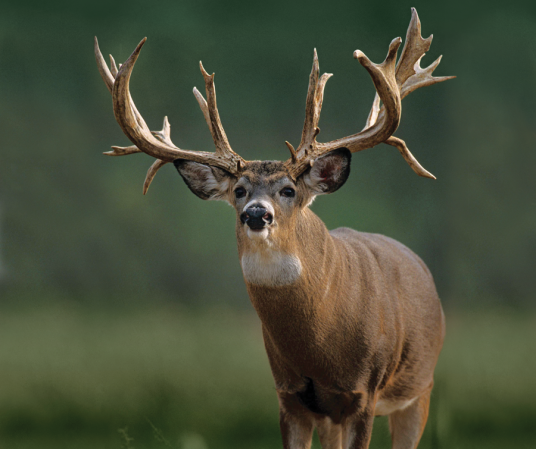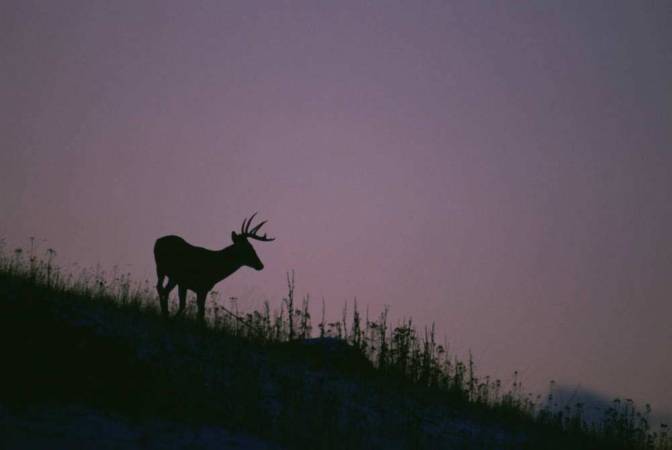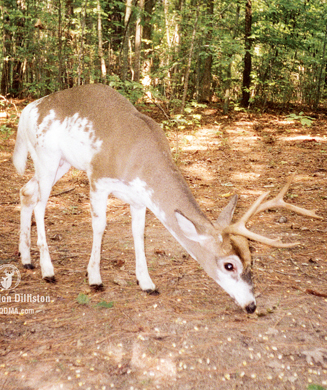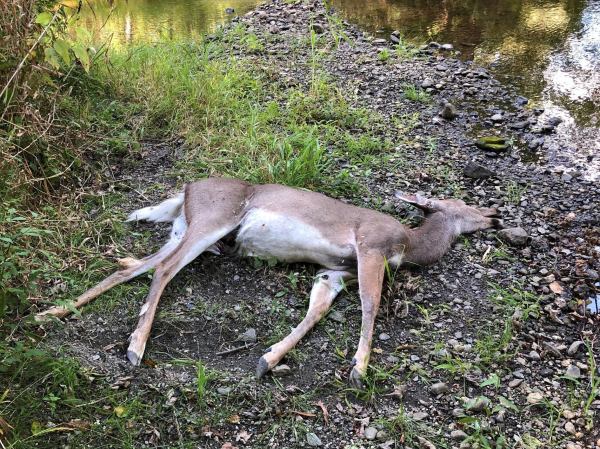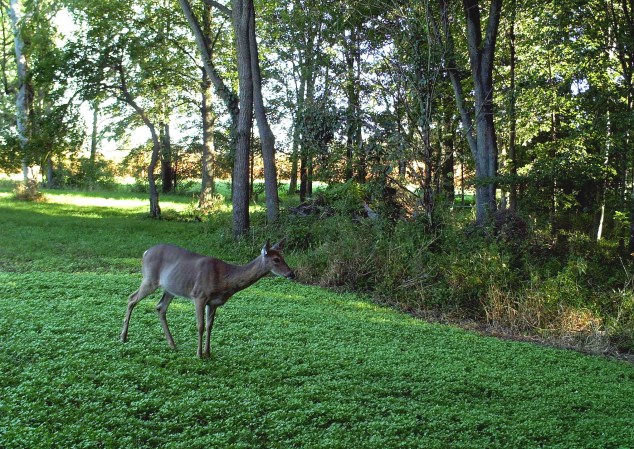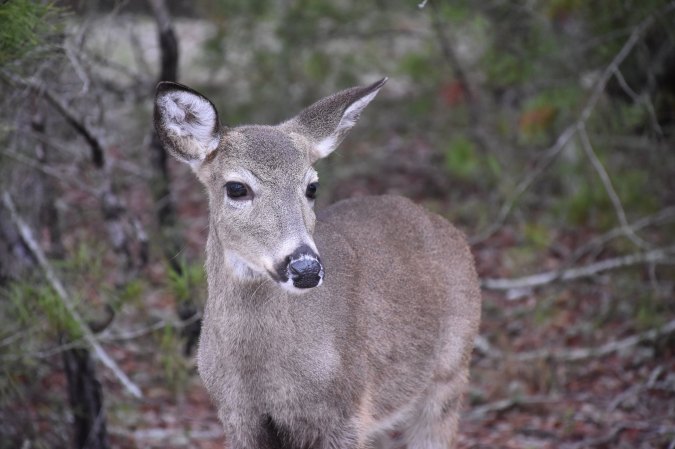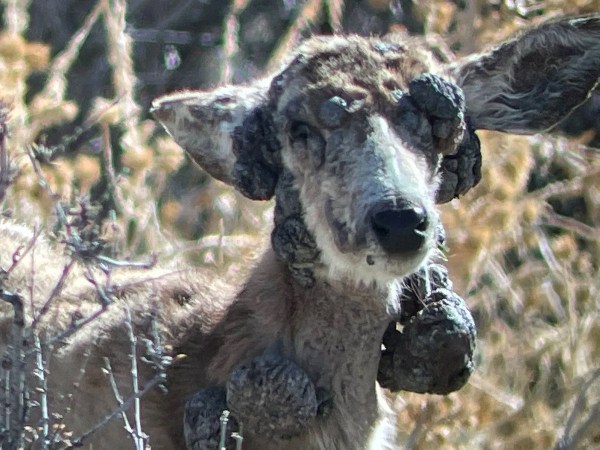Around this time each year, headlines about dead deer near water sources start popping up. The result is usually deer suffering from one of two hemorrhagic diseases (HD): epizootic hemorrhagic disease (EHD) or bluetongue virus (BTV).
So what are these hemorrhagic diseases and what do they mean for whitetail populations and hunters this fall? To find out, I turned to Kip Adams, certified wildlife biologist and Director of Education & Outreach at the Quality Deer Management Association.
Adams says in short “EHD is a viral disease and the most common whitetail disease. It’s transmitted by biting midges, commonly called no-see-ums, and it happens every year.”
During the first few days, the infected deer might look and act normal or possibly show minor signs of illness. After the first week symptoms become more apparent and can include depression, fever, swelling in the head, neck, tongue or eyelids, difficulty breathing, loss of appetite and the deer could loose its fear of man.
Then it gets worse. Some deer develop ulcers on their tongue or have the thick pad on the roof of their mouth begin to erode. To make matters worse, fluid can build up in the lungs and the lining of the rumen can scar. As the symptoms worsen fever sets in and the deer seek out water – that’s why infected deer are usually found dead around water sources.
If you look at this from a glass half full point of view, there is a bright spot. Adams says “not all deer that get the disease die. If they don’t die, they develop antibodies.” Antibodies can help deer that have been previously exposed to a mild case of HD, but in many cases a deer that is exposed to HD for the first time dies within five to ten days. While it’s possible that a cure may exist, there is no vaccine for HD today.
HD also knows no boundaries. Other animals, like mule deer, bighorn sheep and pronghorn antelope are also able to contract the virus. Since it was first reported in 1955, HD has been confirmed in more than 30 states. While the virus is most prevalent in the Southeast, it’s also found in the Northeast, Midwest, southern Canada and on the west coast.
Sometimes it can get really bad. When I asked Kip what the worst outbreak that occurred was he said, “2007 was the worst year on record,” but on a more isolated level “the Milk River region of Montana lost 80% of its deer herd.” That’s not something a whitetail population can recover from over night. The Milk River region will take years to recover.
Reading through the QDMA’s 2012 Whitetail Report, I came across the Southeastern Cooperative Wildlife Disease Study (SCWDS). The SCWDS has been following the disease and has been working with the Centers for Epidemiology and Animal Health to map the distribution of each strain of the virus every year. According to the SCWDS, in North America there are two subtypes of the EHD virus (EHDV 1 and 2) and five subtypes of BTV (BTV 2, 10, 11, 13 and 17). In 2004 a sixth BTV subtype (BTV 1) was isolated from a single whitetail deer in Louisiana, but the significance of this finding is still under investigation. At this time, SCWDS has processed more than 100 samples, and will issue their full report on the 2011 outbreak in November 2012.
Unable to control the insect population, there’s not much hunters and wildlife managers can do to prevent outbreaks from occurring. HD is seasonal and occurs in late summer and early fall. Adams says, “[HD] ends after the first frost, but late summer is the worst time for it, especially with the drought we’re having in the Midwest.” He also noted that, “while not usually a big management concern to wildlife managers, it can be a big deal for hunters.” A severe outbreak to localized populations can ruin a season for deer hunters in that area. Deer hunters in areas where HD has cause severe declines in local populations should consider decreasing the local doe harvest to help the herd rebound at a faster pace.
Despite the devastation that HD can cause there’s one thing wildlife managers and hunters have to remember – deer have flourished despite being subjected to repeated outbreaks of HD for at least a century. Regardless of the severity of this year’s outbreak, the deer herd will recover, just like they have for the past 100 years.
About Kip Adams:
Kip Adams of Knoxville, Pennsylvania, is a certified wildlife biologist and QDMA’s Director of Education & Outreach. He has a bachelor’s degree in wildlife and fisheries science from Penn State University and a master’s in wildlife from the University of New Hampshire. He’s also a certified taxidermist. Before joining QDMA, Kip was the deer and bear biologist for the New Hampshire Fish & Game Department.

